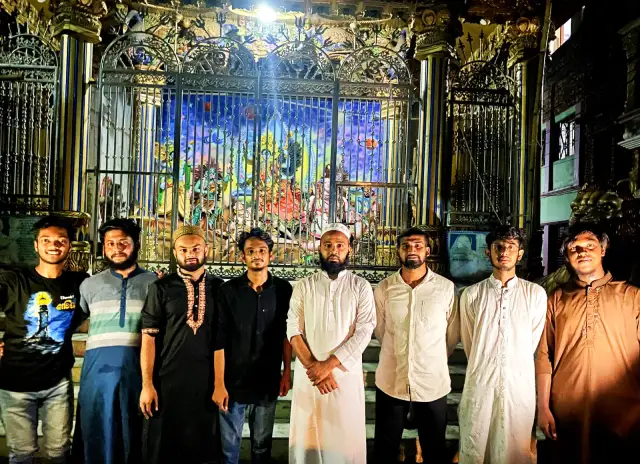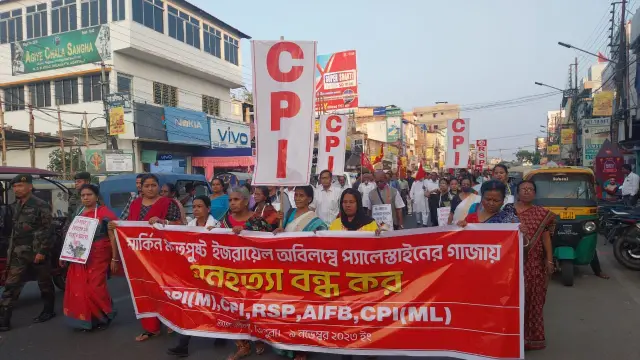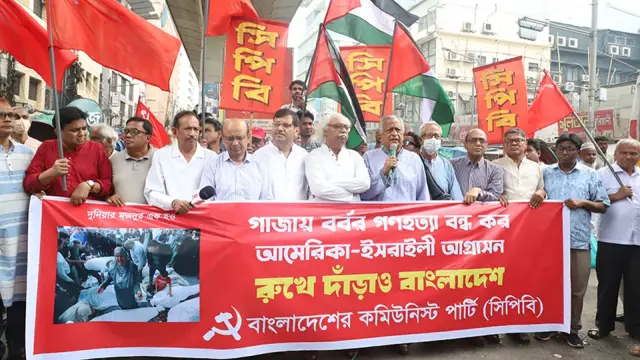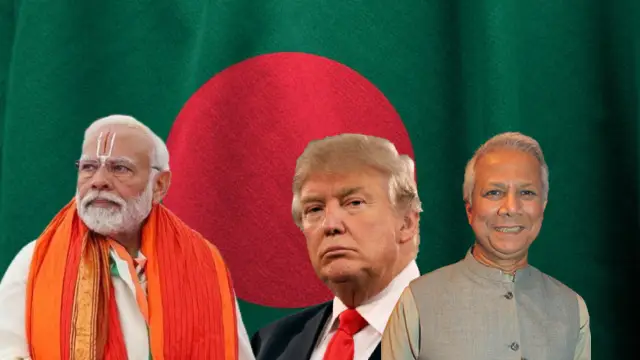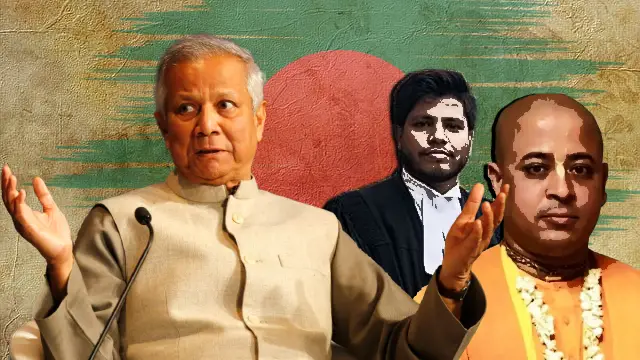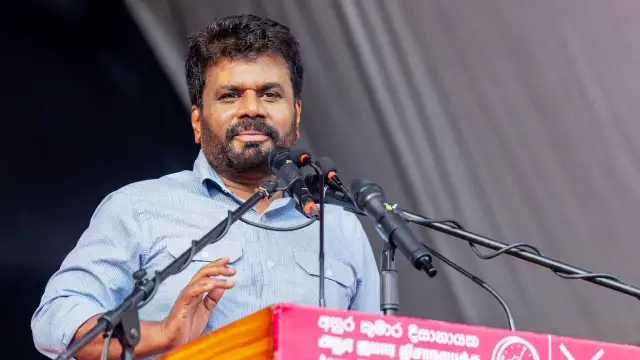India is going through a tense phase since a group of armed militants attacked tourists in Jammu & Kashmir’s Pahalgam on April 22nd, killing 26, including a Nepalese national and a local. The Pahalgam terrorist attack has steered India’s national politics and mainstream discourses to the far-right side, provoking a regional conflict and posing a threat to peace and stability in South Asia.
Prime Minister Narendra Modi’s far-right Bharatiya Janata Party (BJP), which is driven by Hindutva ideology, has capitalised on the situation and has been fuelling a jingoistic frenzy across the country using its rabble-rousers, state-sponsored mainstream media and social media.
The optics of the attack on the tourists, all from the majority Hindu community travelling in Muslim majority Kashmir, have been presented as a typical “Islamic terrorist” act.
Instead of blaming Union Home Minister Amit Shah, Mr Modi’s closest confidante, and asking for accountability from the government, the BJP supporters and their allies have been blaming the Opposition, those who support secularism, oppose bigotry and systematic injustice against India’s minority Muslims and Christians as culprits.
Following a similar template used after a militant strike on a paramilitary convoy that killed 40 soldiers in Pulwama of Jammu & Kashmir in 2019, India’s far-right media has been provoking a war with Pakistan.
Israel’s aggression on Gaza has been hailed in public by the ruling BJP leaders and influencers. They have been demanding an emulation of the Gaza template targeting the Muslim-majority Kashmir valley and Pakistan.
Amid this situation, Mr Modi’s government has called for an all-party meet, where it selectively invited a very few parties, excluding others.
In this meeting, the Opposition, particularly the Indian National Congress (INC), has extended support to the government’s future measures. However, none have vocally demanded Mr Shah’s resignation for the mayhem.
While critics of the government, who have been asking for accountability behind the Pahalgam terrorist attack, are silenced, questioning the government is also attracting vilification from the BJP activists.
Pahalgam terrorist attack suits Hindutva narrative
The Pahalgam terrorist attack is a stark deviation from the pattern seen in militant attacks in Jammu & Kashmir so far.
For the first time, after an attack on a bus carrying Hindu pilgrims, the valley saw a deliberate and targeted killing of tourists based on their religion.
The mercenaries asked the men their names, religion and shot them when they couldn’t recite the “Kalima”.
This bears a stark deviation from the attacks that have so far taken place in the valley, where militants have specifically targeted Indian Army and paramilitary troops.
Moreover, as the mercenaries asked for religion before shooting the victims, it has helped spread a tremendous amount of Islamophobia across India.
While such optics help India’s far-right Hindutva camp to fan anti-Muslim sentiments, they cause great harm to Kashmir’s tourism industry and local economy.
As Kashmir’s economy is intrinsically tied with tourism and it’s the only thriving industry in the disputed territory apart from a gasping handicraft industry, it’s essential for the local economy that tourist footfall increases in the valley.
Tourism in Kashmir saw a boon post-COVID years. From 930,000 tourists visiting the valley in 2015, the number shot up to over three million in 2024.
While Kashmir’s economy saw a massive crisis after Mr Modi’s government imposed a strict lockdown in the valley from August 5th, 2019, when it abrogated the Constitution of India’s articles 370 and 35A, which allowed special semi-autonomous status to the former princely state of Jammu & Kashmir, the inflow of tourists from 2022 helped the state to some extent recover from it.
In this scenario, while there have been killings of those migrant labourers who came from outside and settled in Jammu & Kashmir, there were no attacks on the tourists.
But the April 22nd attack broke the pattern and even irked the majority of Kashmiris, who find the Pahalgam terrorist attack an assault on their livelihoods.
This sparked a Kashmir-wide protest against the killing and drew condemnation even from militant organisations like Lashkar-e-Taiba’s (LeT) representative, even though the attack is allegedly carried out by a group affiliated with it.
The massive unrest in Kashmir following the Pahalgam terrorist attack is something that the valley’s militant organisations, Kashmiri nationalists and Islamists, could’ve gauged well due to their strong network.
Then why did the Pahalgam terrorist attack happen? Who did it benefit apart from feeding the Hindutva narratives and providing hyperbolic fodder to India’s motormouth television anchors?
Pahalgam terrorist attack: What appears on the surface?
“The Resistance Front” (TRF) has claimed responsibility for the Pahalgam terrorist attack. It’s a little-known organisation, which Indian intelligence alleges is a rebranded LeT.
According to Qatar-based broadcaster Al-Jazeera, the TRF has made a fresh claim on its social media handle on Wednesday, April 23rd, which is inaccessible from India.
Al-Jazeera quoted the TRF saying, “individuals targeted were not ordinary tourists”.
“[Instead], they were linked to and affiliated with Indian security agencies,” Al-Jazeera quoted from the TRF’s statement.
“It was not a typical tourist group, but rather an undercover agency tasked with research,” it added. The broadcaster said that the TRF has claimed the attack should “serve as a wake-up call not only for Delhi but also for those who support Delhi’s questionable strategies”.
While the TRF accuses the victims of being involved in “undercover agency” research, their profiles prove otherwise.
Except for three—a Hyderabad-based Central Intelligence Bureau (IB) official, a Haryana-based Indian Navy officer posted in Kerala’s Kochi and an Arunachal Pradesh-based Indian Air Force (IAF) personnel who was recently transferred to Dibrugarh from Srinagar—none of the others were linked with the Indian intelligence agencies.
The claim that they were government agents is not backed by any facts by the TRF.
Moreover, the TRF’s claim that the tourists are changing the demography of Jammu & Kashmir is also unfounded. As none of them were there for any other plan than spending a holiday with friends and family members.
These baseless allegations by the TRF show that it’s trying to hide its motive behind the Pahalgam terrorist attack using a smokescreen.
What appears on the surface is that the Pahalgam terrorist attack was a planned one to target civilian tourists, fully realising how it would impact Jammu & Kashmir’s economy and stir a massive wave of Islamophobic jingoism across India.
Understanding Kashmiri militancy
India’s far-right Telegram channel OSIntTV has shared a clip of a LeT spokesperson denying any links to the Pahalgam terrorist attack.
The terror strike, which has fuelled massive unrest even in Jammu & Kashmir and has pushed the majority of the valley’s working class towards the brink of an economic collapse, is too risky a venture for the Islamist militants in the valley.
Primarily, LeT and Hizb-ul-Mujahideen are two foremost militant organisations that have kept the Indian forces on their toes for over two decades in Jammu & Kashmir.
While India alleges that Pakistan’s military establishment and its intelligence agency, Inter-Service Intelligence (ISI) have been supporting the Islamist militants who want the former princely state to join Pakistan.
Critics say Pakistan, which first provided weapons and training to the Kashmiri nationalists, had invested heavily in these cross-border militant organisations as Islamabad grew wary of the demand for an independent, sovereign Kashmir, raised by organisations like the Jammu & Kashmir Liberation Front (JKLF).
However, organisations like TRF and the People’s Anti-Fascist Front (PAFF) popped up soon after the abrogation of Article 370, according to the Indian intelligence.
The Indian government claims the TRF is a proxy organisation tied to the LeT, while the PAFF has been a proxy for the Jaish-e-Mohammad (JeM).
The LeT and JeM have reportedly used these repackaged outfits to carry out militancy in Jammu & Kashmir to ensure Pakistan doesn’t find itself in trouble due to Financial Action Task Force (FATF) sanctions.
Using re-branded organisations cuts the umbilical cord that links the TRF or the PAFF to the LeT and JeM, and thereby saves Pakistan from coming under FATF sanctions.
However, as the LeT and JeM, whose ranks are filled mostly by Pakistani men and tribals, unlike Hizb-ul-Mujahideen, which recruits from locals, the TRF and the PAFF also follow the same route.
Filled with foreign fighters, the TRF and the PAFF neither have grassroots connections nor any obligations towards the Kashmiri people, which allows them to carry out targeted assassinations and promote a hardline Islamist outlook that doesn’t conform to the belief systems of the majority of Kashmiri Muslims.
While the LeT, JeM and the ISI can now easily shrug off responsibilities for the actions of organisations like the TRF and the PAFF, they can also show them as the handiwork of the locals, who are angry with New Delhi’s policies.
The same template has been followed in the case of the Pahalgam terrorist attack. The Pakistani establishment has condemned the act and blamed it on India’s internal feuds with the Kashmiri locals.
New Delhi has unofficially blamed the Pakistani Army Chief Asim Munir’s recent speech, in which he hailed the two-nation theory and equated the Kashmir issue as the Islamic Republic’s jugular vein.
With Kashmir’s cause hijacked by organisations like the TRF, the bloodbath caused by the Pahalgam terrorist attack proved that these outfits are now going to act as mercenaries without any liability towards the locals.
What will the Pahalgam terrorist attack lead to?
It appears that Mr Modi’s BJP will capitalise on the Pahalgam terrorist attack to evoke Islamophobia and consolidate the Hindu vote bank before crucial assembly elections in Bihar, Assam and West Bengal.
While the state of Bihar will go to elections later this year, Assam and West Bengal will have their respective assembly elections in 2026.
Driven by jingoism, the Opposition has limited its attacks on the government over the security lapses and has not vocally demanded accountability for the mishap.
When Mr Modi called for an all-party meeting on the issue, he didn’t invite all parties that have representatives in the Parliament, especially the Communist Party of India (Marxist-Leninist) Liberation, which has a critical stance regarding the government’s Kashmir policy.
The Opposition leaders, including the Indian National Congress (INC) party’s Rahul Gandhi, have extended full support to the government’s future steps.
It’s alleged that by not questioning the government or demanding accountability, the INC and others wanted to preserve their vote banks that can be affected due to the high tides of xenophobia that have swept India.
This has emboldened Mr Modi’s position, who is an expert in capitalising on crises and turning them into political opportunities.
Across India’s cities, the urban elites and middle class have been demanding a war with Pakistan and a bloodbath in Jammu & Kashmir in retaliation.
Although more civilians have been killed in the valley over the years—142 between 2020 and 2024—this frenzy has been visible after April 22nd due to the communal nature of the killings and the media hype.
While Mr Modi and Mr Shah manage to skip accountability over the Pahalgam terrorist attack, there is less scope for them when it comes to avenging the massacre.
What the Pahalgam terrorist attack has done is that it has burst the bubble Mr Modi and the BJP have built around Kashmir returning to normalcy following the abrogation of Article 370 in 2019.
Modi’s problematic “normalcy”
Soon after Mr Shah abrogated articles 370 and 35A on August 5th 2019, the BJP entered a celebratory mood across India, while Jammu & Kashmir was pushed into a stringent lockdown, much before the world saw the COVID lockdowns.
For months, Kashmiris were left disconnected from the world, with no internet, phones or digital television connections.
While Kashmiri politicians remained under arrest, Mr Modi and Mr Shah marketed these humiliating optics as “Kashmir’s integration” into India.
For years, the BJP has been claiming that Mr Modi’s demonetisation exercise ended terror funding in Jammu & Kashmir, while the abrogation of articles 370 and 35A paved the way to Kashmir’s integration.
Moreover, all these years, Mr Modi took the credit for “normalising” Kashmir. However, in reality, there has been no normalisation.
Data shows that conflicts between the Indian Army and paramilitary forces and the militants have been continuing even after the special status was withdrawn and the former state was divided into two union territories.
Jammu & Kashmir still remains the highly militarised region in the world. Yet, Mr Modi’s government kept claiming that the valley’s situation was normal.
In this scenario, when the tourists visit the valley, they ignore the security concerns that they were earlier mindful of. Moreover, the large-scale migration of poor workers from Bihar and Uttar Pradesh to Jammu & Kashmir is also stirring a rift between the indigenous labour and the migrants.
Attacks against migrant workers have significantly increased in recent years. The TRF is associated with these targeted killings of the migrant workers.
Amid this, as the call for retaliation against Pakistan, for the Pahalgam terrorist attack, has occupied the centrestage of national discourse in India, it has shrunk the space for questioning those in power but has expanded the scope for attacking the Opposition, the secular and progressive forces that oppose bigotry.
In this situation, it’s to be seen how Mr Modi’s government navigates through the treacherous landscape, which is their own making, to balance public aspirations with realpolitik.


